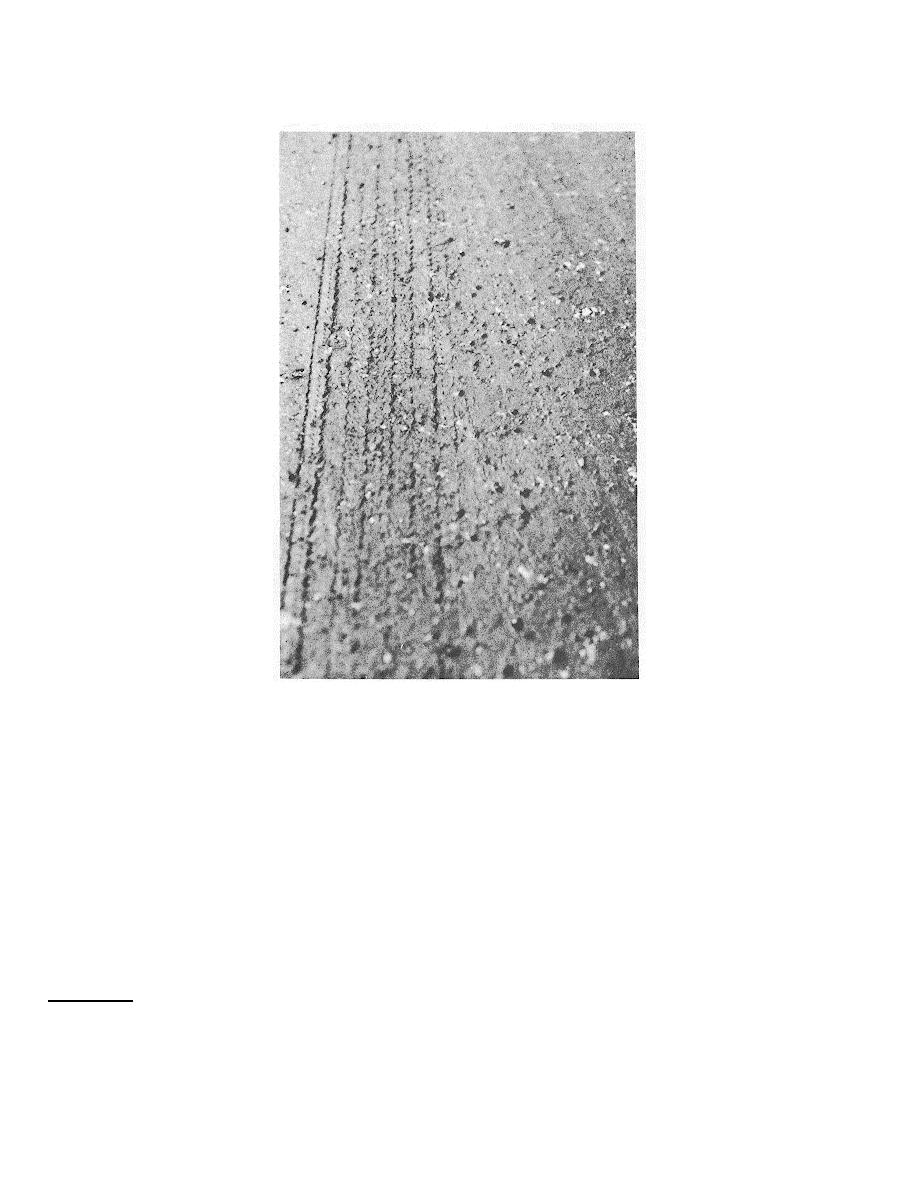
TM 5-623
H-Bleeding has occurred extensively and considerable asphalt sticks to shoes and
vehicles during at least several weeks of the year (fig B-10).
Figure B-10. High-severity bleeding.
How to Measure:
Bleeding is measured in square feet of surface area. If bleeding is counted, polished
aggregate should not be counted.
Name of Distress:
Block Cracking
Description:
Block cracks are interconnected cracks that divide the pavement into approximately
rectangular pieces. The blocks may range in size from approximately 1 by 1 foot to
10 by 10 feet. Block cracking is caused mainly by shrinkage of the asphalt concrete
and daily temperature cycling (which results in daily stress/strain cycling). It is not
load-associated. Block cracking usually indicates that the asphalt has hardened
significantly. Block cracking normally occurs over a large proportion of pavement
area, but sometimes will occur only in nontraffic areas. This type of distress differs
from alligator cracking in that alligator cracks form smaller, many-sided pieces with
sharp angles. Also, unlike block cracks, alligator cracks are caused by repeated
traffic loadings, and are therefore found only in traffic areas (i.e., wheel paths).
Severity Levels:
L-Blocks are defined by low*-severity cracks (fig B-11).
*See definition of longitudinal and transverse cracking.
B-5



 Previous Page
Previous Page
